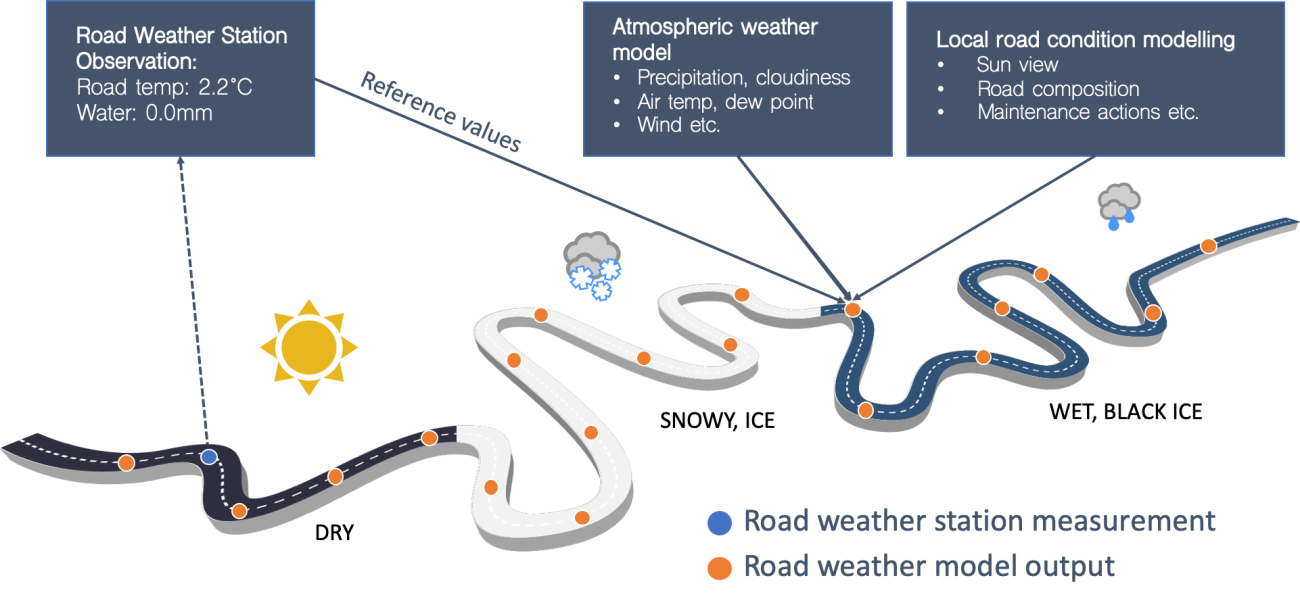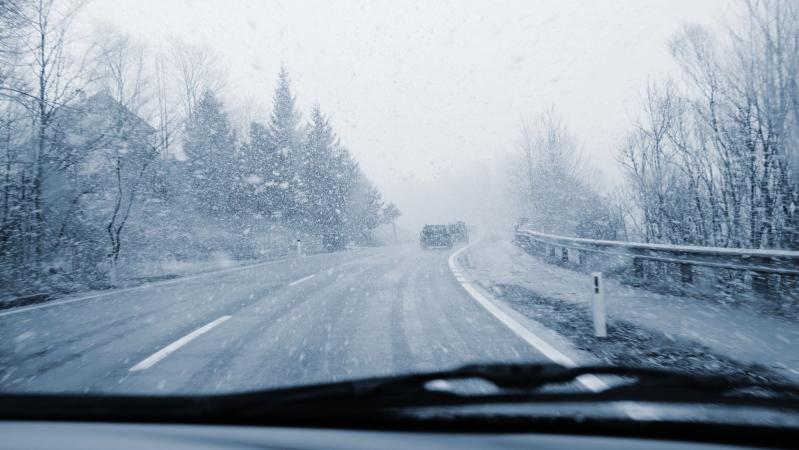Road weather forecasting
In our previous blog post, we focused on how weather impacts road users and their safety. One key conclusion: Combining today’s connected car capabilities with the latest advancements in hyper-local and timely atmospheric weather and road-weather predictions holds promise for improving safety, efficiency, and convenience for all road users. We also learned how a large number of road accidents are connected with poor weather conditions, so there are clear financial and safety incentives for improvement.
Our focus is evolving from enabling traditional weather forecasting (air temperature, wind speed, and direction, precipitation, lightning) to road weather forecasting: a state-of-the-art service predicting current and near-future driving conditions, both on the road surface and along the road network. Is there a layer of water, ice, or snow on the road? How that will impact tire friction?
The foundations of road weather forecasting
A fundamental starting point for accurate road weather service is using an accurate atmospheric weather forecast as the main input. The next is having a proven scientific model to define road surface state such as whether local precipitation is making the road wet, icy, or snowy – or how the road dries or freezes after precipitation has ended.
Vaisala uses a sophisticated mass and energy-balance model (the road weather model) for a precise understanding of road surface conditions for each road segment. For accurate modeling, several data sources are incorporated:
- Weather radar & satellite
- Road weather observations (fixed and mobile sensors)
- Road traffic profile and volume
- Road class, location of bridges
- Road maintenance activities (e.g., de-icing, plowing).
These and other data sources are used to create a road weather model output for road segments that provide road temperature with the heat radiation in the road surface and the amount of precipitation falling to and on the road.
Fine-tuning forecast accuracy
Typically, road conditions can be classified on a high level as dry, wet, slush, snow, or ice. More detailed classifications can also be available if needed, such as describing why a part of the road is slippery. In addition, Vaisala’s road weather forecast can provide friction estimates, water or ice depth, and road surface temperature output.

Using vehicle sensors and road weather station data to fine-tune forecast accuracy
Vaisala’s road weather model can incorporate data from a standard vehicle’s sensors, vehicle-mounted professional road weather sensors, and road weather stations along the route to improve road weather forecasts. The most valuable observations gleaned from sensors typically measure road surface temperature, and potentially friction and road state.
Mobile connection and validation
Mobile observation data also enables higher resolution of the road weather forecast in terms of the length of road segments, which is particularly helpful for the safe and convenient use of autonomous vehicles.
Road weather data resolution can vary from a few kilometers to several meters depending on road segment based on anticipated use, incoming data quality and availability, plus road network topography and terrain.
As a global leader in weather observation technologies and products, Vaisala comprehensively validates its road weather accuracy. The validation process may include several steps, but the most critical one is matching road conditions with ground truth. We do this by comparing the road weather model output against actual road condition observations from nearby Vaisala (or third-party) road weather stations or mobile measurements.
Enabling safer ground transport
Where atmospheric weather may focus on air temperature, precipitation, humidity, and wind forecasting, road weather information is very relevant in enabling efficient and safe ground transportation. Delivering high accuracy, local and real-time road surface conditions, and friction forecasts along the road and beyond the horizon enable safe operation for connected and autonomous vehicles and fleets. When safety is the top priority, road condition forecasting helps provide key insights for vehicle performance and comfort, such as when:
- Autonomous driving is allowed
- Autopilot speed may need to be reduced
- Manual control is needed.
Vaisala’s road weather forecast service currently covers North America and Western Europe. In the coming months, we will continue to increase our service’s geographical coverage, accuracy, and prediction data resolution.



Add new comment